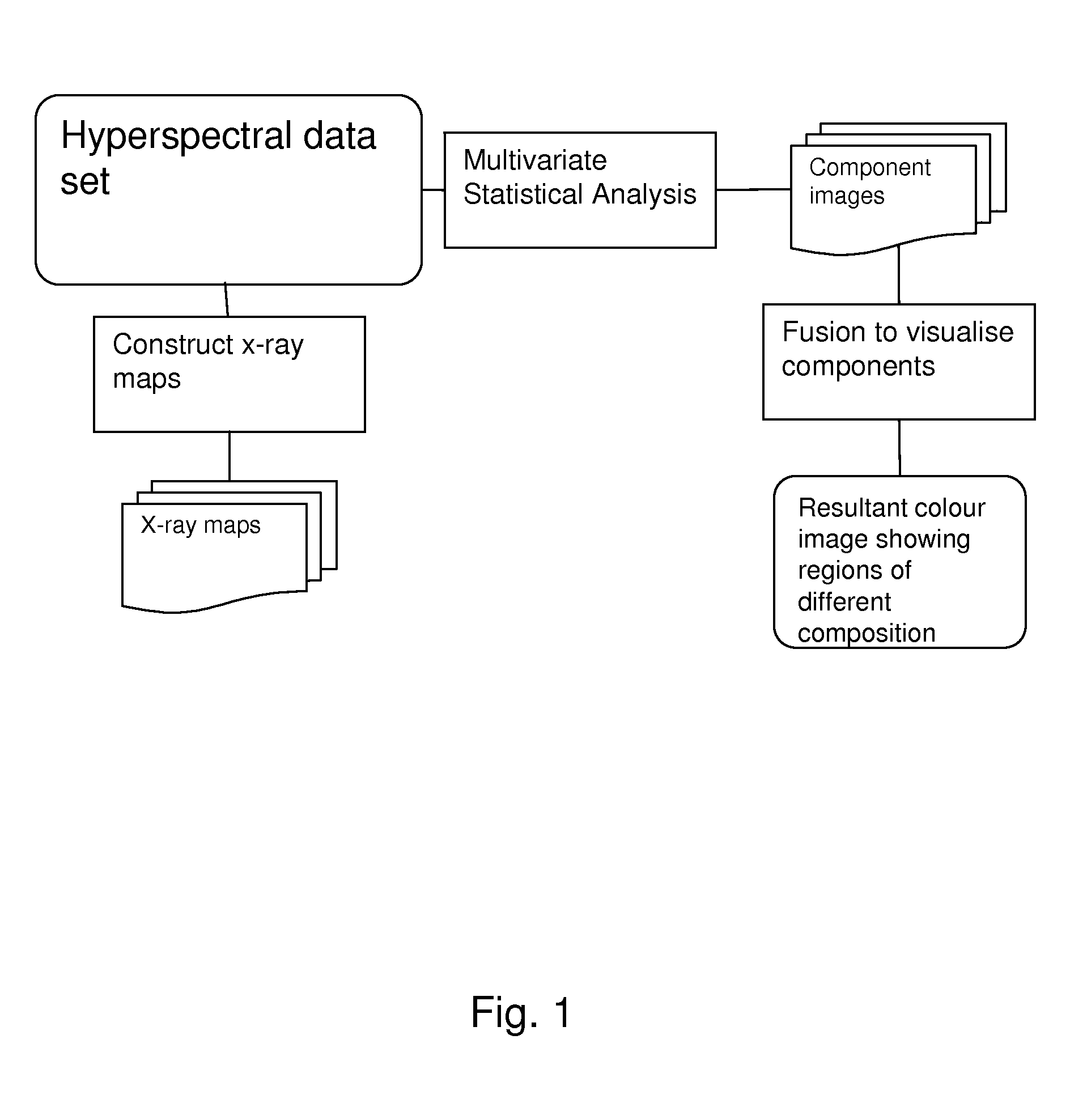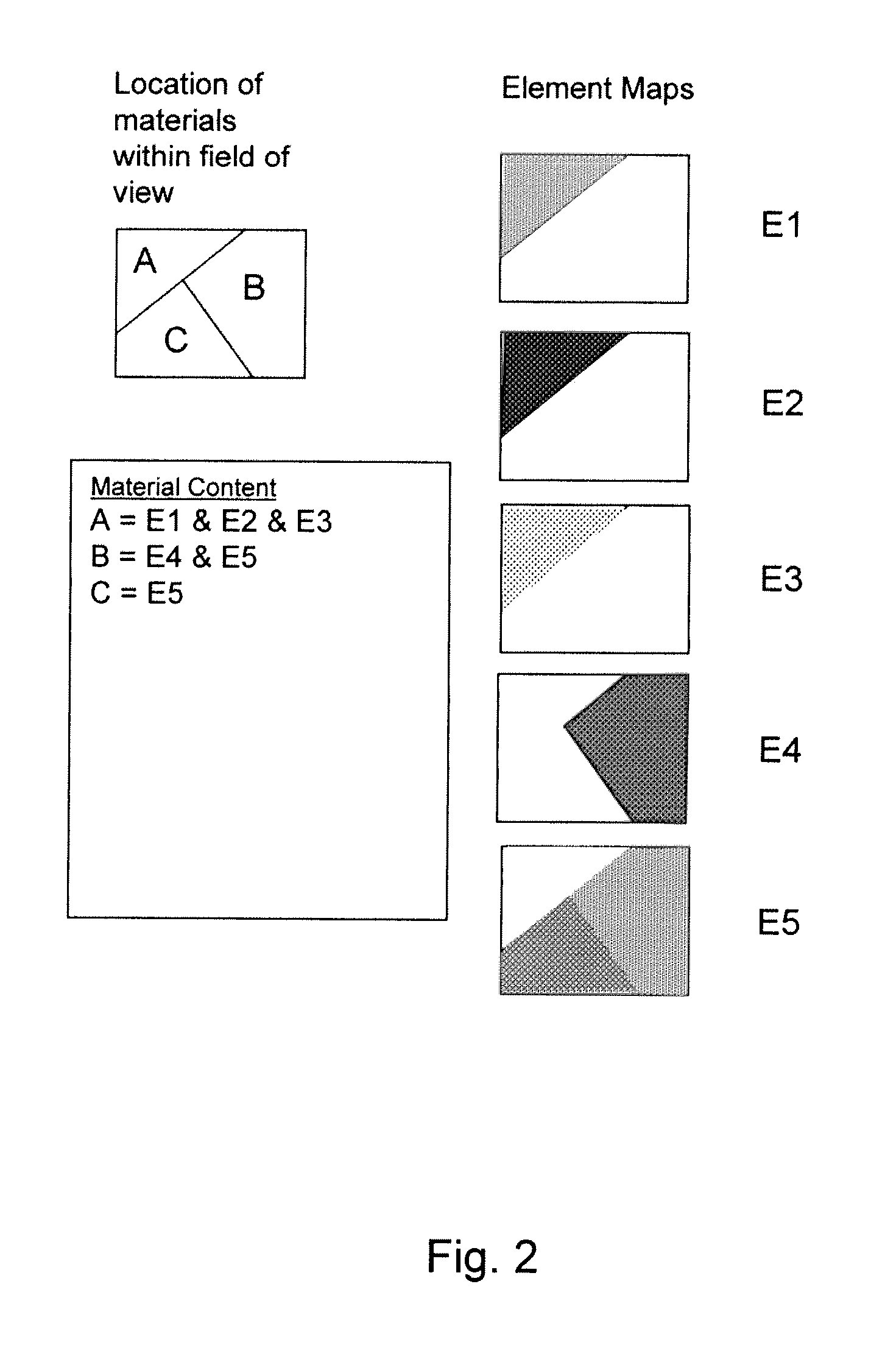Material identification using multiple images
a material identification and image technology, applied in the field of multiple image identification methods, can solve the problems of not being able to combine all images, not being able to provide a visual connection between the resultant image and the distribution of individual chemical elements, and being unable to direct the construction of x-rays, so as to reduce the measure of collinearity and improve the use of processing resources.
- Summary
- Abstract
- Description
- Claims
- Application Information
AI Technical Summary
Benefits of technology
Problems solved by technology
Method used
Image
Examples
Embodiment Construction
[0038]We now describe some examples of the invention. For illustration purposes we refer mainly to the case where each original image represents the concentration of a particular chemical element at all pixel positions and is referred to as an “element map”. However, the approach can also be applied to any collection of images that are in perfect registration so that the signals for the same pixel location in every image are associated with the same position in the real object field of view (i.e. a “multi-spectral” set of images as described above).
[0039]When a region for a particular material is in the “field of view” of an analysis system, it will contain certain elements in a fixed proportion. FIG. 2 shows an example field of view where three different materials, A, B and C are visible. Element maps are acquired for the elements E1, E2, E3, E4 and E5. These are also illustrated in FIG. 2. Since E1, E2 and E3 only occur within material A, the maps for E1, E2 and E3 are very simila...
PUM
 Login to View More
Login to View More Abstract
Description
Claims
Application Information
 Login to View More
Login to View More - R&D
- Intellectual Property
- Life Sciences
- Materials
- Tech Scout
- Unparalleled Data Quality
- Higher Quality Content
- 60% Fewer Hallucinations
Browse by: Latest US Patents, China's latest patents, Technical Efficacy Thesaurus, Application Domain, Technology Topic, Popular Technical Reports.
© 2025 PatSnap. All rights reserved.Legal|Privacy policy|Modern Slavery Act Transparency Statement|Sitemap|About US| Contact US: help@patsnap.com



